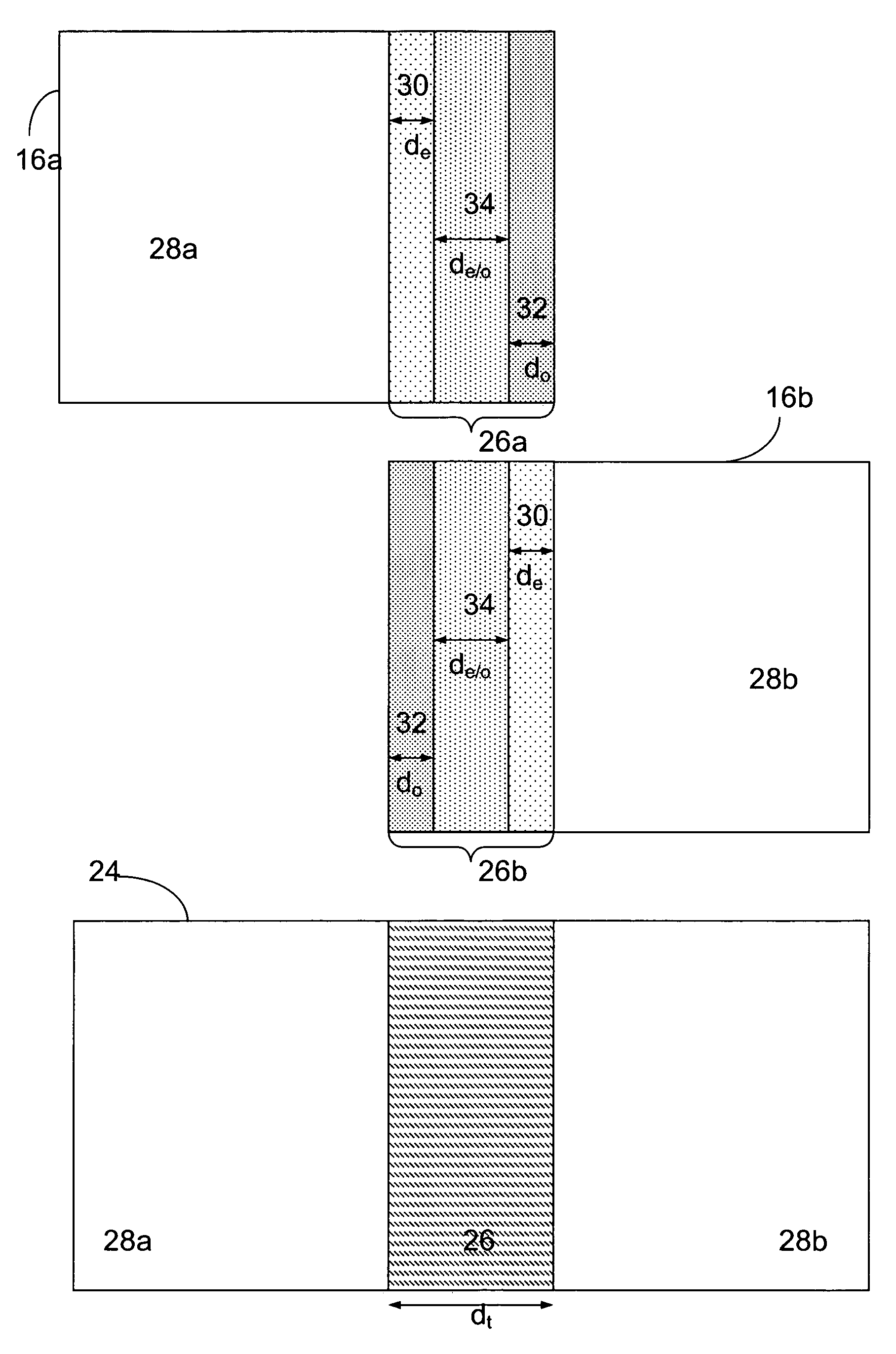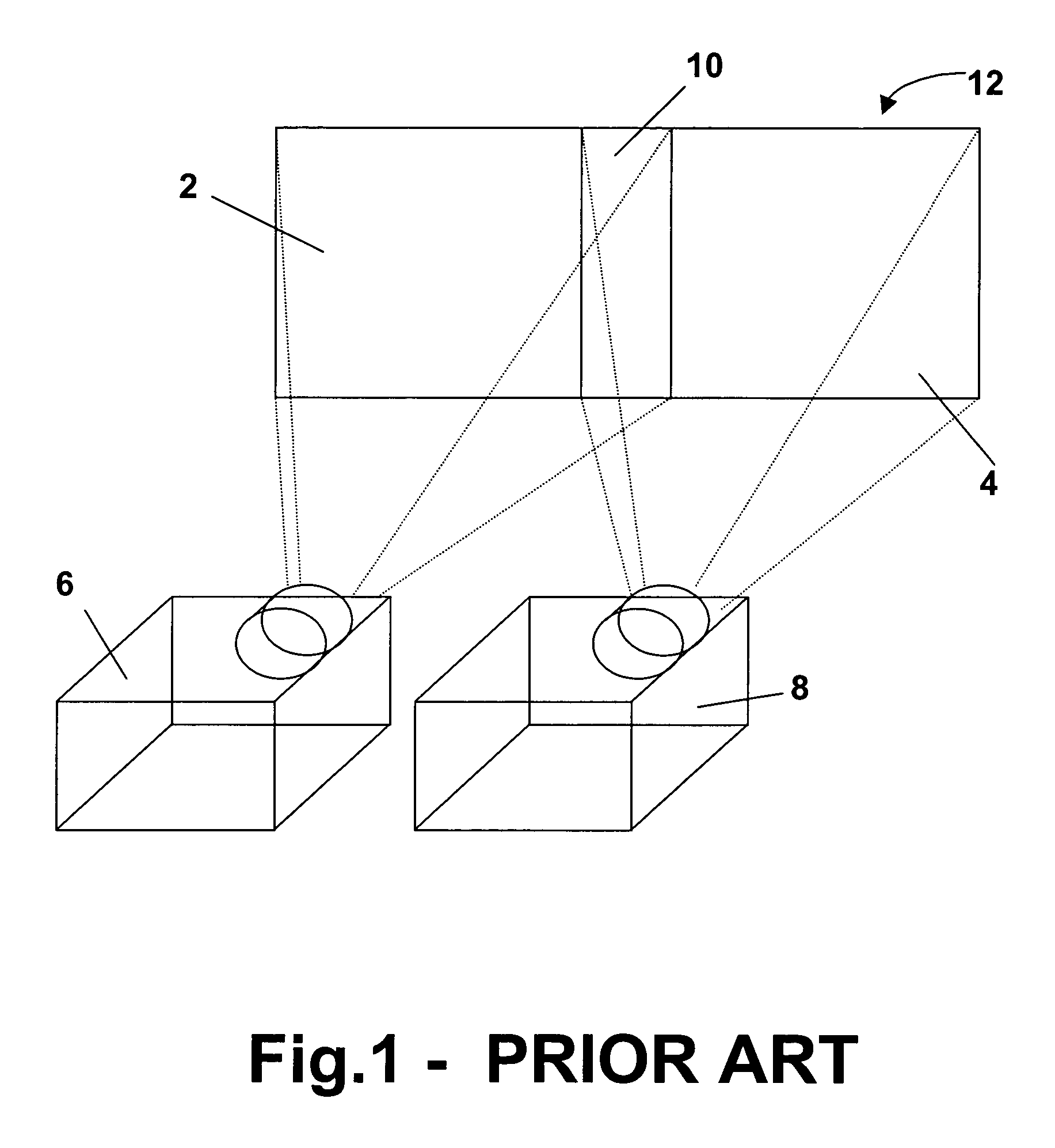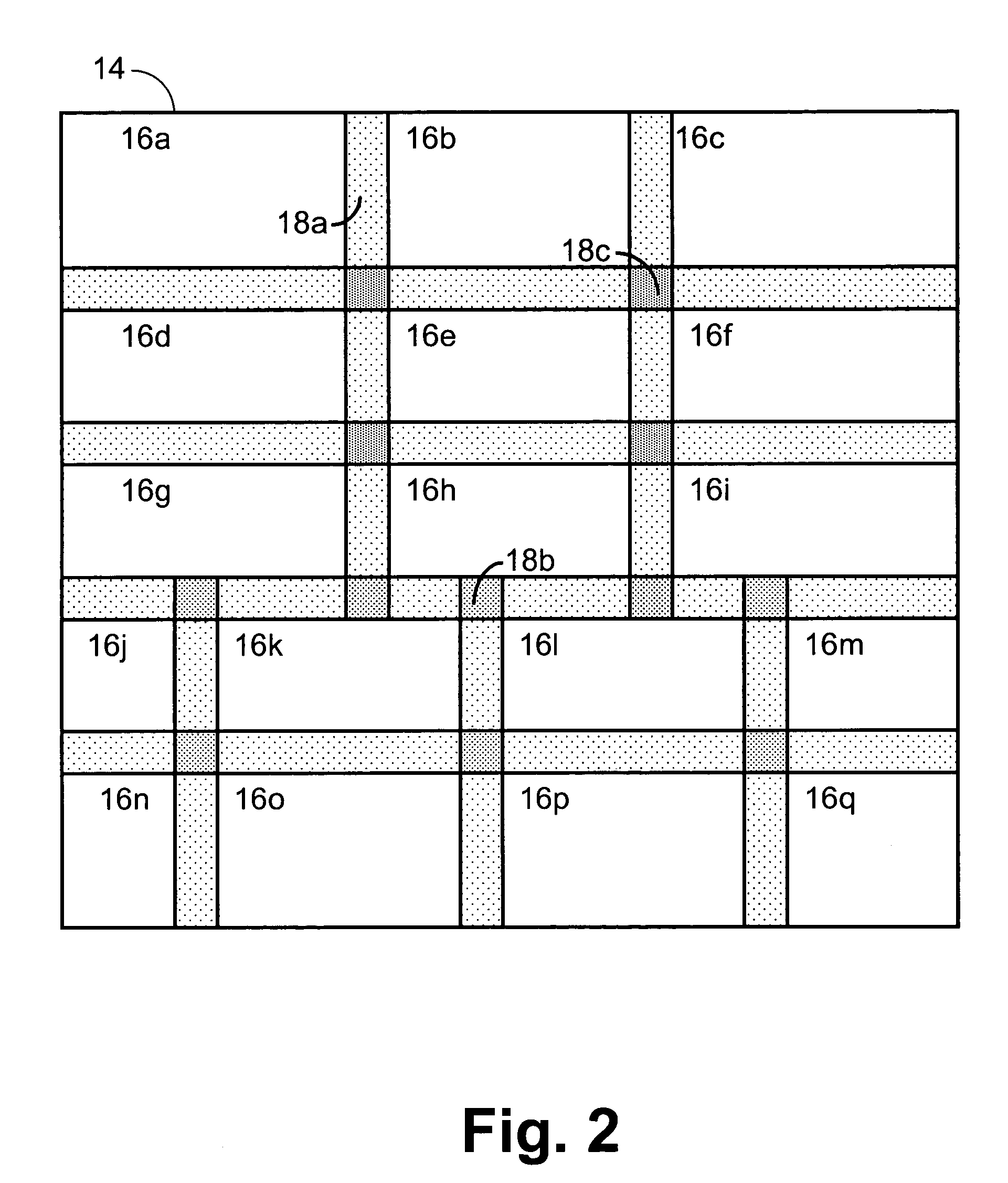Optical and electrical blending of display images
a display image and optical blending technology, applied in the field of optical and electrical blending of display images, to achieve the effect of facilitating installation, alignment and maintenance of the system, and high quality
- Summary
- Abstract
- Description
- Claims
- Application Information
AI Technical Summary
Benefits of technology
Problems solved by technology
Method used
Image
Examples
first embodiment
[0049]According to the present invention, for every sub-image 16a, 16b, the blending area 26a, 26b can be divided into three different spatial regions. A first of those spatial regions is first region 30, which is located in the blending area 26a, 26b of the first sub-image 16a, 16b adjacent to the non-overlapping area 28a, 28b of the respective sub-image 16a, 16b. The light intensity in the first region 30 is attenuated using only electrical attenuation, which is an electronically driven intensity attenuation.
[0050]First region 30 has a width de. In the current description, this type of attenuation will be referred to as active electrical attenuation. A second of the spatial regions is second region 32, which is located at the edge of sub-image 16a, 16b, i.e. at the part of the blending area 26a, 26b of the sub-image 16a, 16b which is located away from the non-overlapping area 28a, 28b. In the second region 32, the light intensity is attenuated using optical attenuation. Second reg...
second embodiment
[0069]A second embodiment describes a blending method according to the present invention, whereby the extent of the area where optical blending is active is limited. Such systems have an optical attenuation of each single projection device, that is only active on the image in a second half or less of the blending area 26a. This can be expressed by the equation
de / o+do≦50% [6]
[0070]Systems, where the optical blending satisfies this equation, have the major advantage that they can be switched from blended mode to non-blended mode using only electrical control of the images without applying mechanical articulation of optical masks.
[0071]By using optical blending only in the second half or less of the blending areas 26a, 26b, it is possible to change the electrical attenuation function from a ramp to a step function with a transmission of 100% in the first half of the blending area 26a, 26b and 0% in the second half of the blending area 26a, 26b. Two sub-images 16a, 16b edge blended usi...
PUM
 Login to View More
Login to View More Abstract
Description
Claims
Application Information
 Login to View More
Login to View More - R&D
- Intellectual Property
- Life Sciences
- Materials
- Tech Scout
- Unparalleled Data Quality
- Higher Quality Content
- 60% Fewer Hallucinations
Browse by: Latest US Patents, China's latest patents, Technical Efficacy Thesaurus, Application Domain, Technology Topic, Popular Technical Reports.
© 2025 PatSnap. All rights reserved.Legal|Privacy policy|Modern Slavery Act Transparency Statement|Sitemap|About US| Contact US: help@patsnap.com



